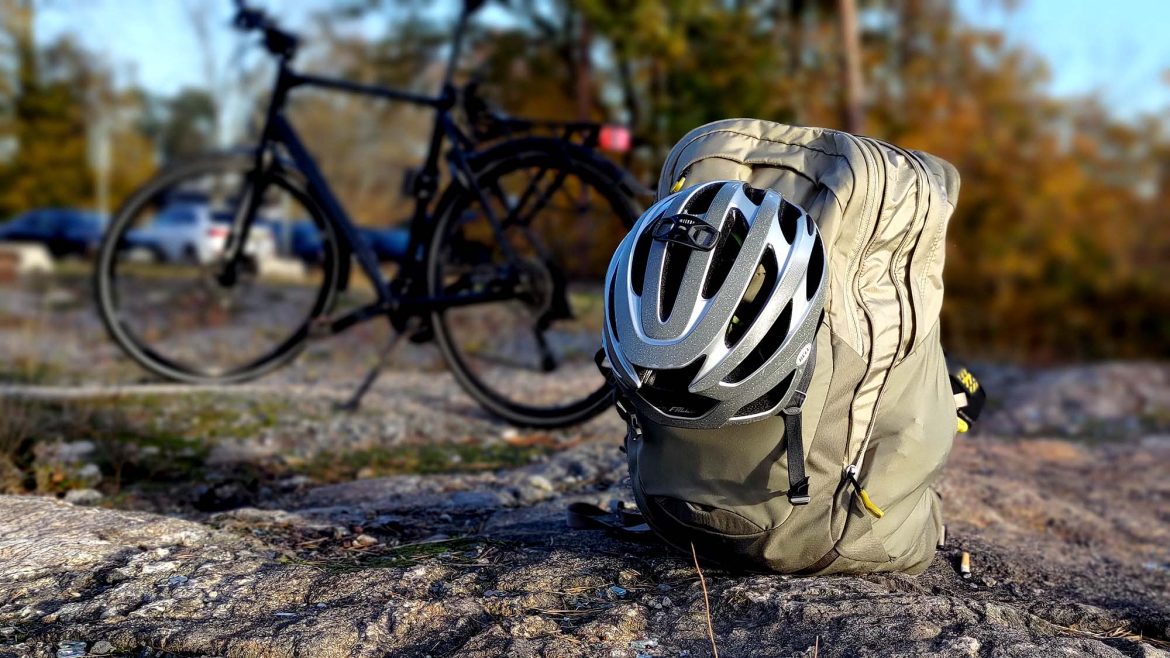TL;DR
The Osprey Radial backpack is a thoughtfully designed option for cycle commuters, balancing spaciousness with a streamlined profile and useful features like a kickstand and protected compartments. While it excels at carrying daily essentials and offers good ventilation, its stability can be an issue during hard climbs, and comfort is best achieved in a forward-leaning cycling posture. It’s not ideal for very heavy loads and has a few minor design quirks like an angled bottle pocket and limited reflectors. Curious to see if its strengths outweigh its weaknesses for your commute? Read on for the full review!
For the dedicated cycle commuter, the demands placed on their equipment are significant. Performance and reliability are paramount. Arguably, one of the most essential items, aside from the bicycle itself, is the backpack. A well-designed backpack becomes a valuable companion, facilitating daily commutes and enhancing the overall experience. Following our review of the Osprey Archeon 24, we sought to evaluate an alternative that addresses the specific needs and potential shortcomings identified in that model, particularly for cycle commuters. This review focuses on the Osprey Radial, a sophisticated and cycle-centric backpack. Our assessment is based on approximately one month of field testing, during which we gained valuable insights into its performance and features.
Overall – Osprey Radial
The Osprey Radial presents a favorable initial impression: lightweight yet robust, spacious without being cumbersome, and thoughtfully designed without excessive compartmentalization. The design appears well-considered and purpose-built. Practical features, such as Osprey’s Kickstand system, which enables the bag to stand upright, enhance usability. The expandable capacity, from 26 to 34 liters, offers flexibility and accommodates varying load requirements. Dedicated computer and notepad compartments are elevated slightly to protect contents from moisture and impact when the bag is placed on the ground. The interior color scheme, particularly in the Tan Concrete version we evaluated, facilitates easy identification of items against the light background.
Overall, our experience has been positive. However, several factors warrant consideration before purchase. We will elaborate on the Osprey Radial’s features and our experience while wearing the backpack in the following sections.
Spaces and organization
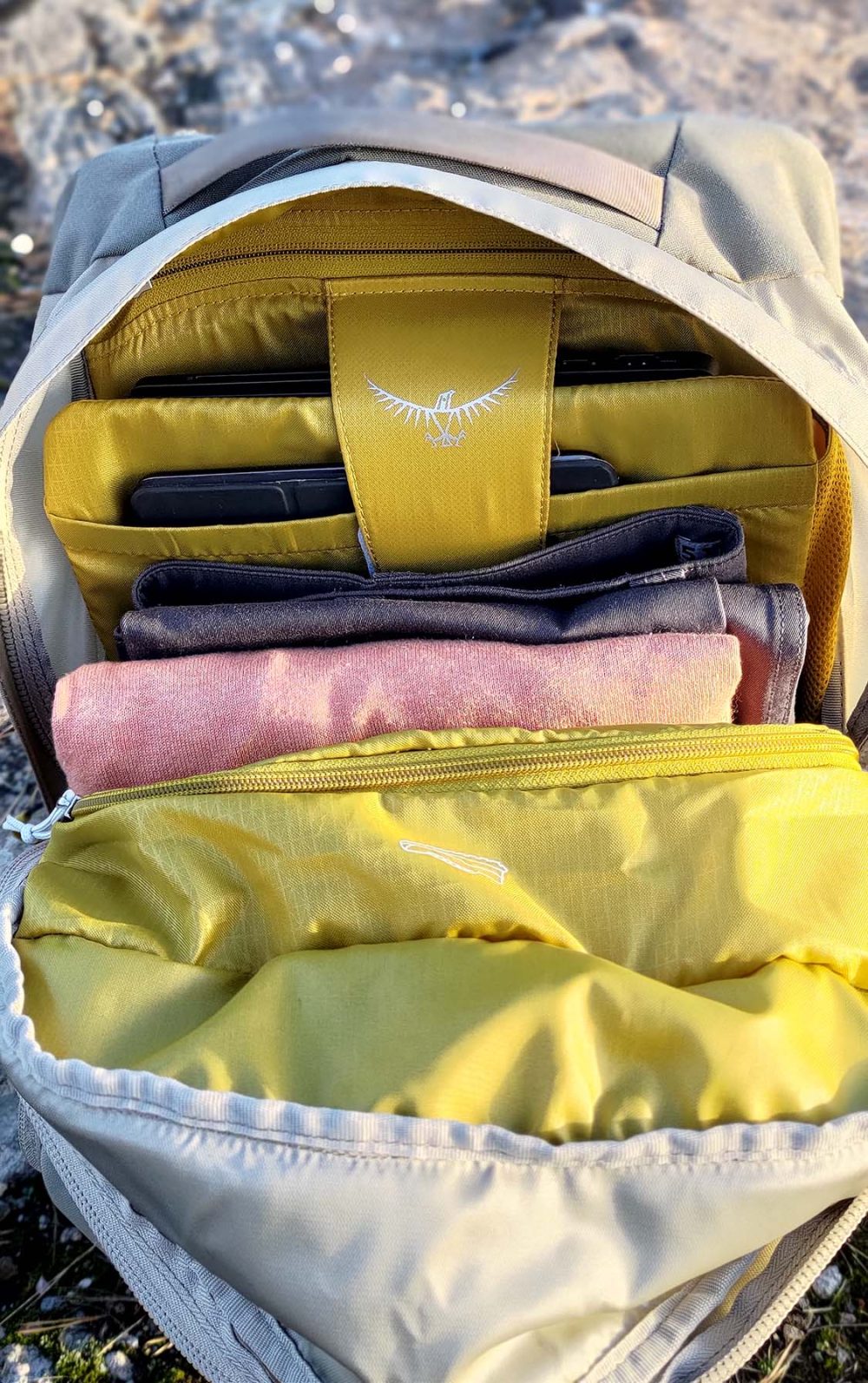
The main rear compartment includes dedicated sleeves for a notepad, laptop, and shoes. A zipper allows for expansion of the compartment’s volume. The front compartment features four smaller pockets and two sleeves suitable for items such as USB drives or pens.

Externally, a compartment on top of the bag is lined with a scratch-resistant material, likely intended for eyewear. However, it can also accommodate headphone cases, mobile phones, and glasses simultaneously if needed. A dedicated helmet storage arch is located just below this compartment.
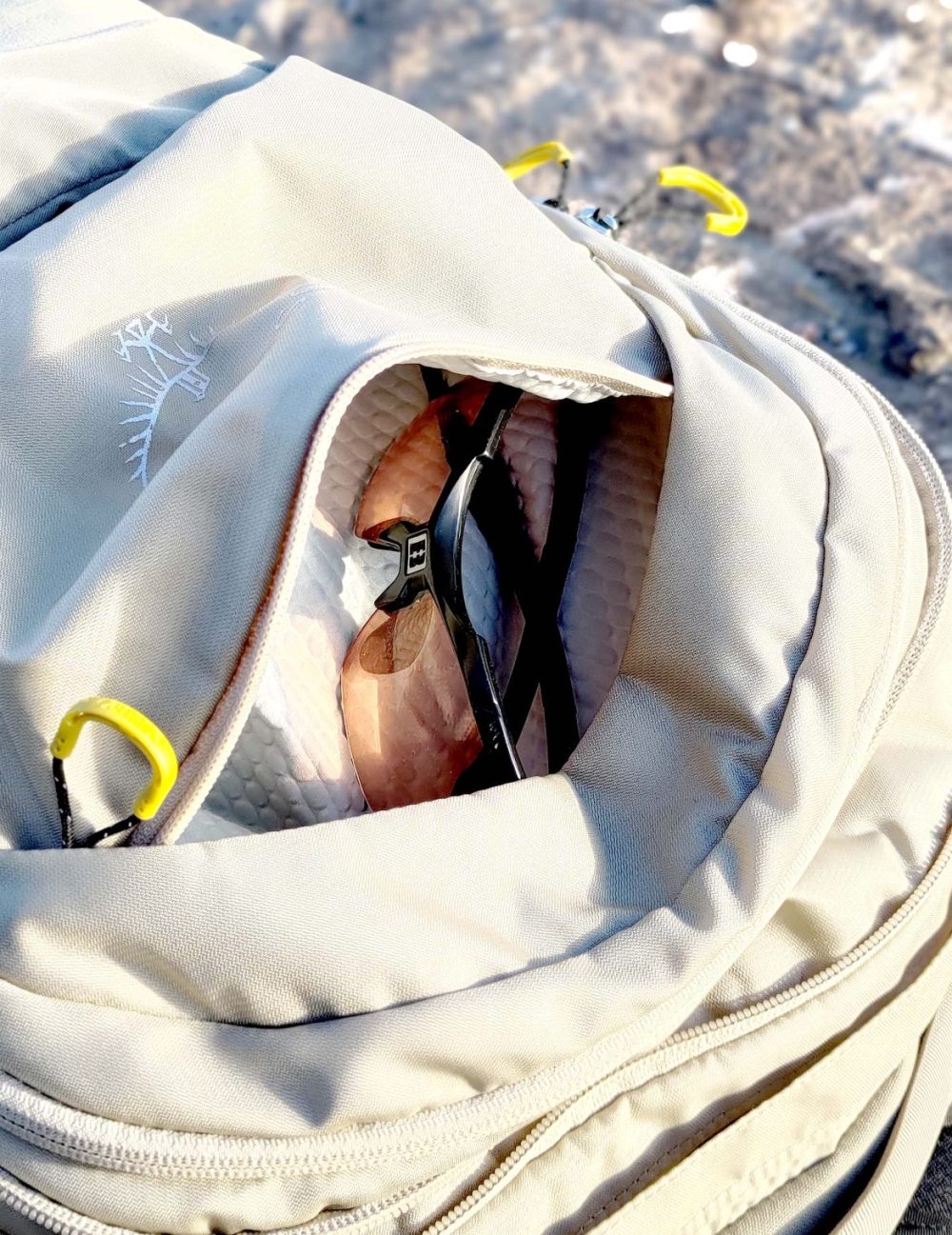
A mounting point for a rear light is situated further down the bag, along with two additional side compartments. One side pocket is designed to hold a water bottle, while the other is zippered. A dedicated compartment on the underside of the bag houses a rain cover, which can be easily deployed over the entire backpack.
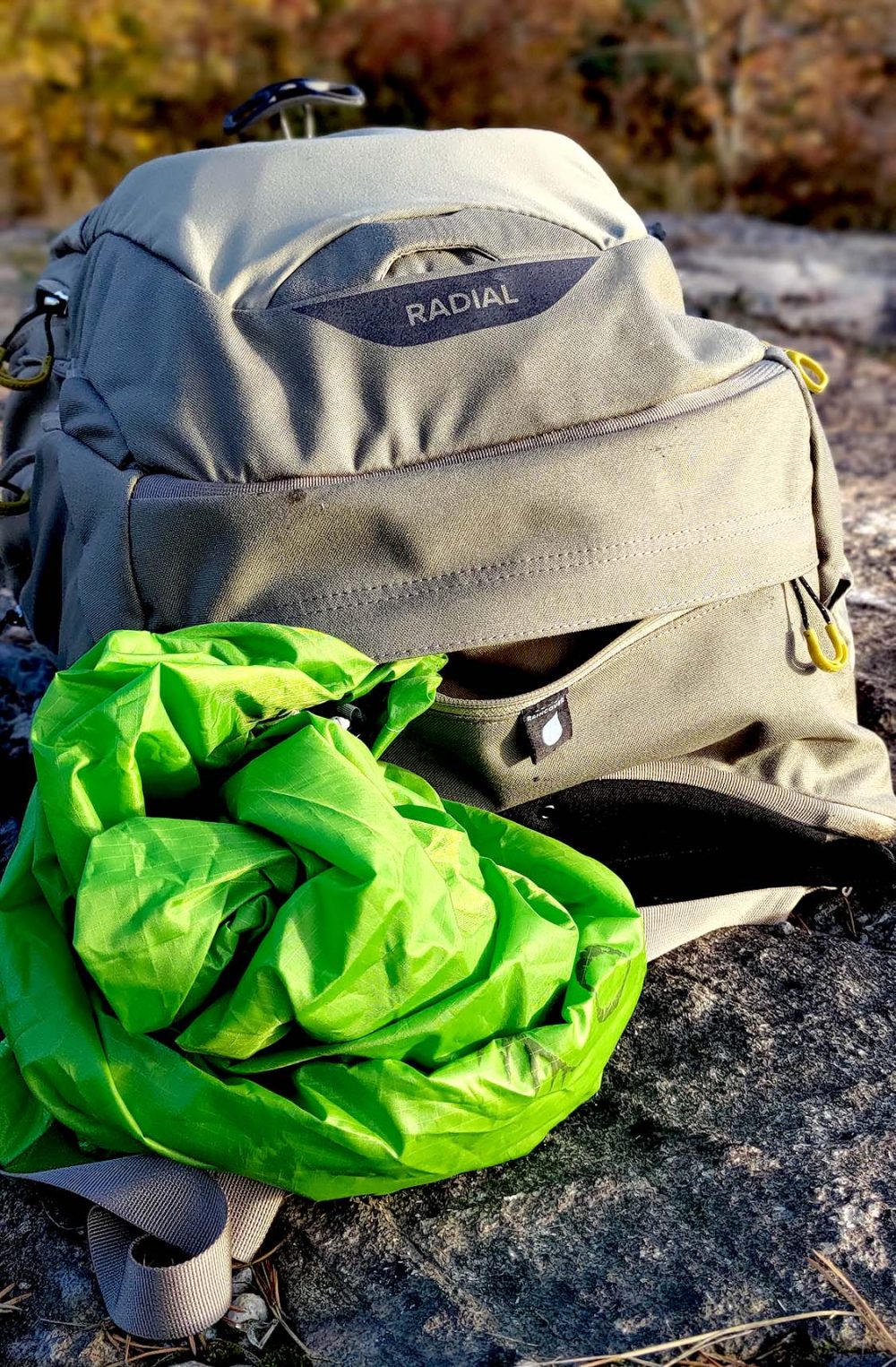
Material and back system
The backpack utilizes exclusively YKK zippers, ranging in size from 5 to 10. All zippers, with the exception of the expansion zipper, are equipped with glove-friendly loops. The primary material is Denier 210D Nylon Dobby, selected for its lightweight properties. Reinforcement is provided by 500D Nylon Packloth at the base and in strategically chosen areas.
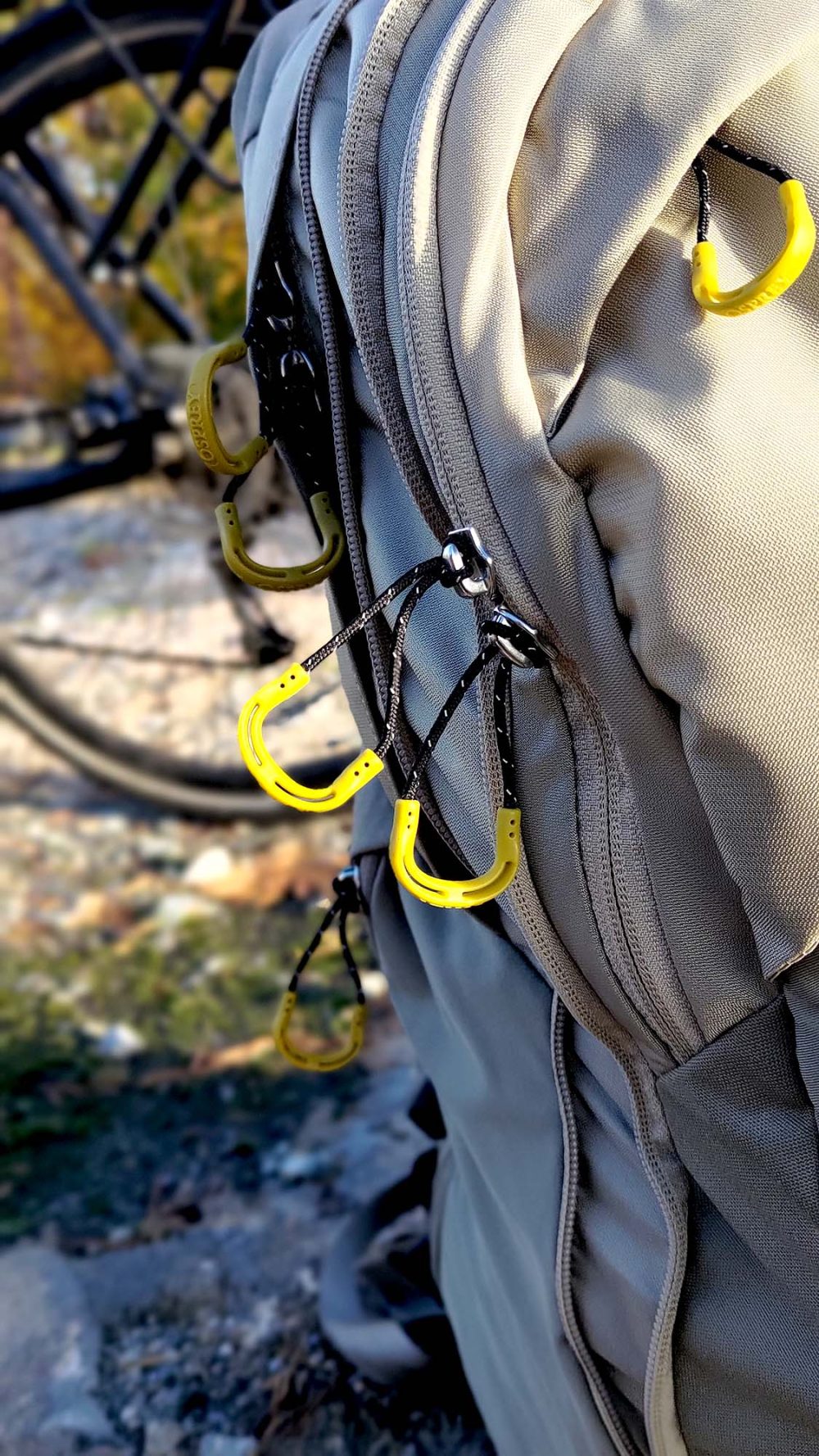
The back system incorporates Osprey’s Airspeed suspension, designed to promote ventilation. This design, however, can compromise stability to some degree. A chest strap and hip belt mitigate this effect. The back system is adjustable in five increments to accommodate different torso lengths.
The experience and usage – Osprey Radial
Upon initial fitting, the Airspeed system’s frame felt somewhat unusual against the back, specifically the shoulder blades, raising initial concerns about comfort. After adjusting the various tension straps, ensuring they were fully extended before tightening, the Osprey Radial achieved a reasonable fit, though not exceptionally comfortable. However, once a slightly forward-leaning cycling posture was adopted, the backpack’s weight distribution shifted favorably. The weight was effectively transferred from the shoulders to the back, creating a sensation of the backpack “floating” just above the back. This effect is attributed to the shoulder blades moving away from the frame in a forward-leaning position, resulting in a more even distribution of weight across the back.
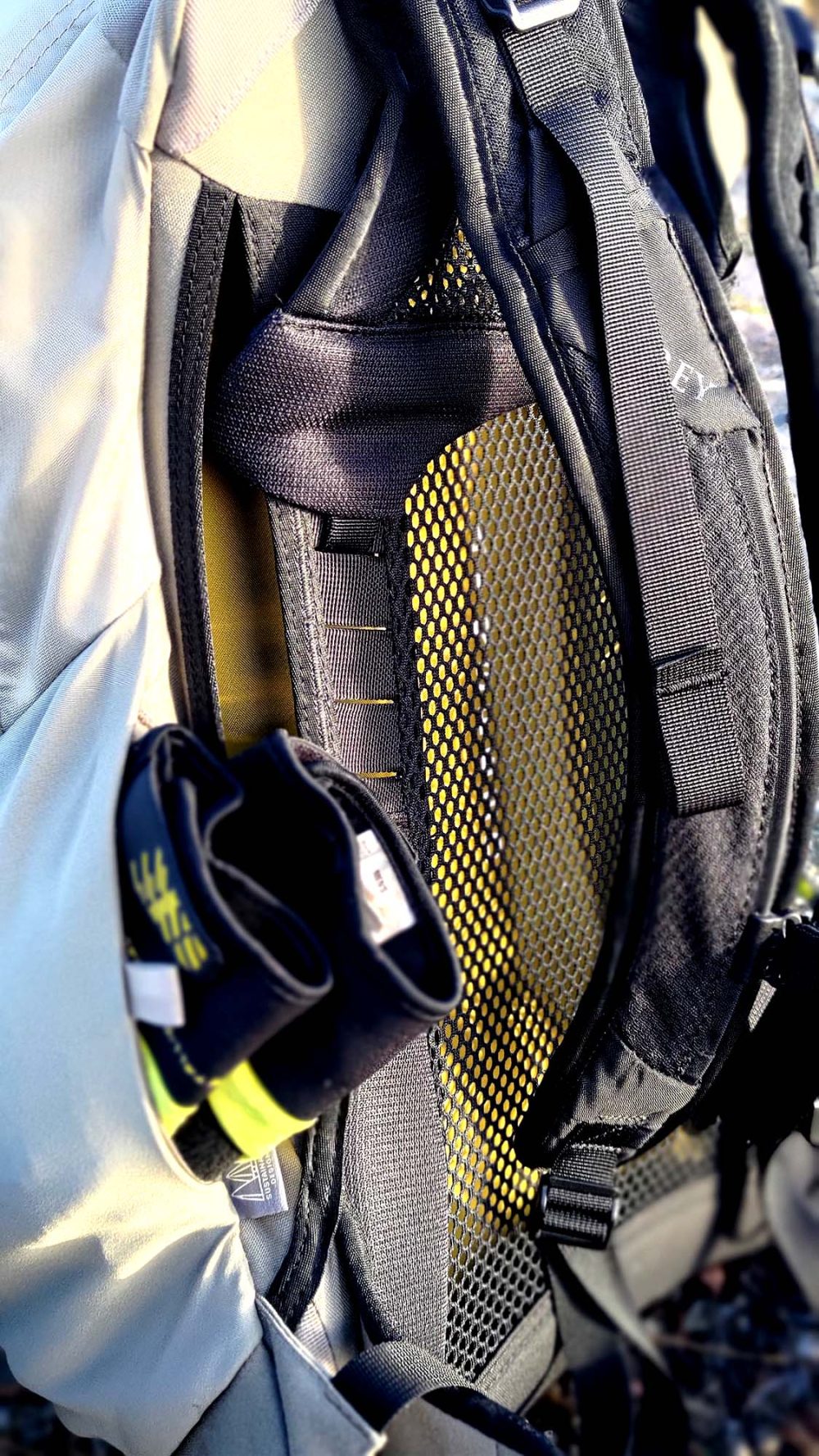
As previously noted, stability is not a primary strength of the Osprey Radial. This becomes particularly noticeable when standing on the pedals during uphill climbs. The backpack exhibits some back-and-forth movement, tugging on the straps. However, this sensation subsides upon returning to a seated position, and the “floating” sensation returns.
When heavily loaded, with approximately 13-14 kilograms (a weight potentially unsuitable for extended cycling), the comfort diminishes. The backpack can feel somewhat rigid against the back, and any imbalance becomes more pronounced. Therefore, the Osprey Radial is not ideally suited for heavy load carrying in the same manner as the Archeon 24. While capable of transporting daily essentials, it is not optimized for carrying groceries or other heavy items. Such use is possible, but not particularly comfortable.
Things to keep in mind
Individuals of smaller stature may find it beneficial to test the backpack prior to purchase to assess the fit of the Airspeed system’s frame against their back. Note that optimal comfort is achieved when leaning forward.
The Osprey Radial is available in two color options: Tan Concrete (as tested) and Abyss Black. The Tan Concrete color proved to be relatively susceptible to staining due to its light hue.
Room for improvement exists
The Osprey Radial’s bottle pocket is angled at approximately 45 degrees to facilitate access while wearing the backpack. However, this design poses a risk of larger bottles falling out. A more traditional, vertical pocket design would be preferable, along with an additional compartment to mitigate the limitation of carrying only one (relatively small) bottle, especially on longer journeys.
The inclusion of more prominent and strategically placed reflectors on the shoulder straps and front of the bag would enhance visibility and safety for cyclists operating in low-light conditions. While an additional light can be attached, this may be perceived as redundant if one is already mounted on the bicycle. Such reflectors could be integrated without compromising functionality or aesthetics.
Finally, and admittedly subjectively, a wider range of color choices would be desirable. Aside from black, Tan Concrete is a somewhat understated option.
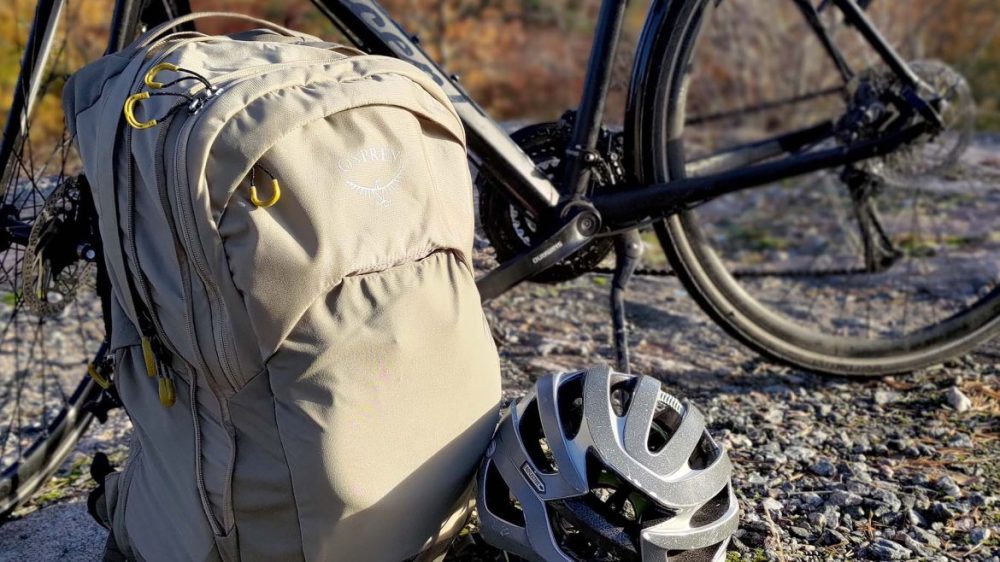
Conclusion – Osprey Radial
After several weeks of use, the Osprey Radial has consistently performed at the high level suggested by our initial assessment. It is a well-suited backpack for its intended purpose, and familiarity with its layout and optimal storage locations develops quickly. It comfortably accommodates daily essentials and facilitates organized storage. While some areas could be improved, and certain considerations are warranted prior to purchase (as detailed above), the Osprey Radial represents a thoughtfully designed and functional backpack for cycling in various weather conditions.
Osprey provided test samples for this review. The provision of materials does not influence our editorial independence or the outcome of our reviews.
